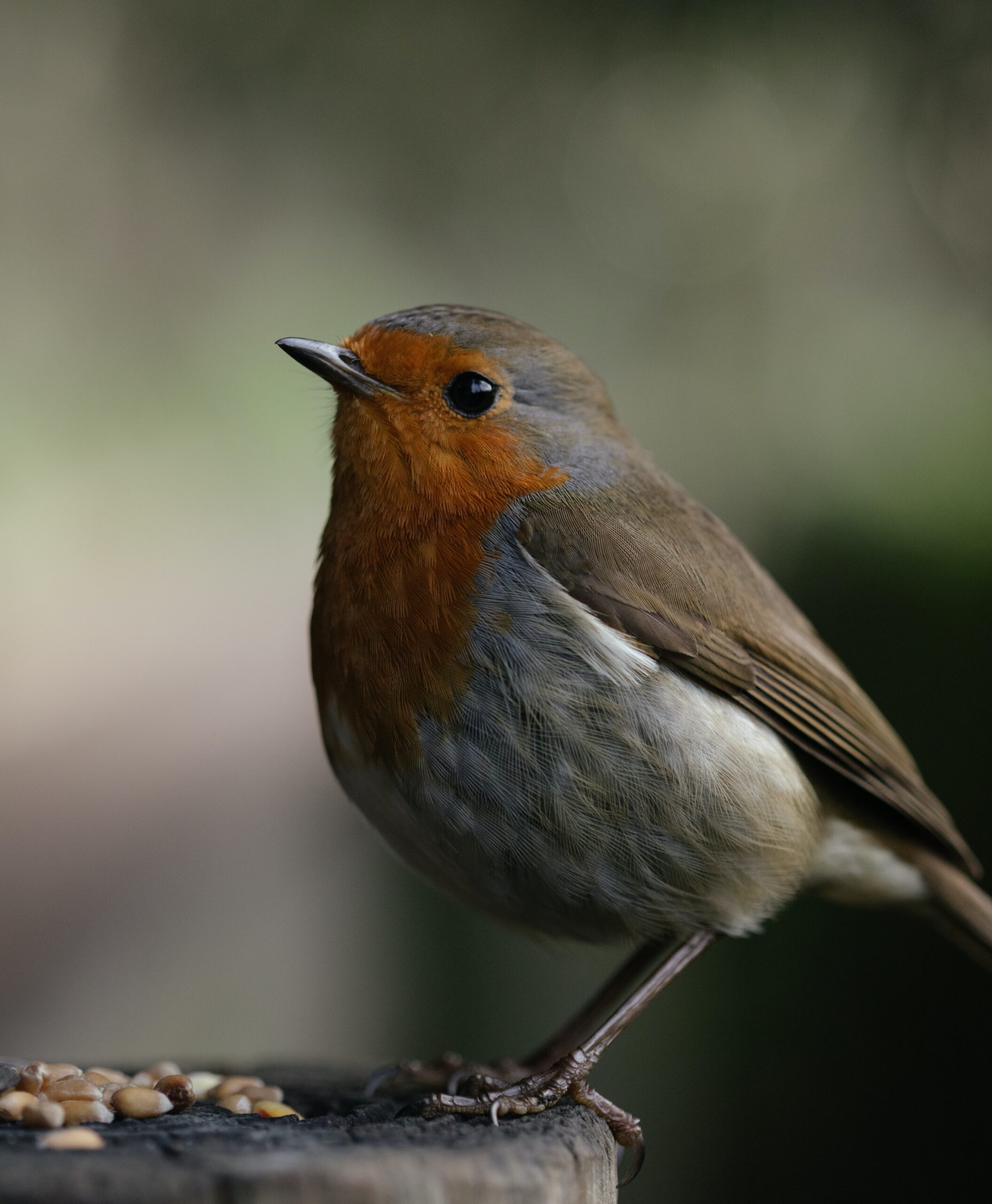
Robin
The robin (Erithacus rubecula) is a beloved and charming bird that graces gardens, parks, and woodlands across Europe and parts of Asia with its iconic presence. Recognized by its distinctive orange-red breast and brownish-gray upperparts, the robin's small and delicate frame exudes an air of familiarity and warmth. Measuring around 14 centimeters in length, this bird's melodious song adds a cheerful note to the natural symphony of its habitat. Despite its diminutive size, the robin is known for its territorial behavior, defending its chosen territory vigorously and often singing from prominent perches to announce its presence.
With a diet that spans both insects and small fruits, the robin is adaptable in its feeding habits. It hops across lawns and woodland floors, using its keen eyesight to spot insects and earthworms, while also feasting on berries during the colder months when insects are scarce. This resourcefulness has endeared the robin to many, and its role as a messenger of changing seasons has made it a symbolic harbinger of spring and a symbol of hope.
The robin's nesting habits are equally endearing. Often choosing concealed locations like hedges or shrubs, it crafts its cup-shaped nest with a mixture of twigs, grass, and feathers, creating a safe haven for its clutch of speckled eggs. The fledglings, when they hatch, are cared for by both parents, a joint effort that reflects the strong family bonds of these birds.
While the robin's cheerful presence and vivid appearance have cemented its place in folklore and culture, it faces challenges ranging from habitat changes to competition with non-native species. Yet, its resilience and adaptability continue to make it a cherished symbol of nature's beauty and a reminder of the wonders that inhabit our surroundings.
